Once upon a time there was a small island group surrounded by Kallada river and Ashtamudi lake – a cluster of small 8 islands (called as Thuruth in local Malayalam language). Three sides are embraced by Kallada river and rest one side by Ashtamudi lake. It had thousands of small streams used for water transportation and the island was filled with fruits and cultivation of different types. Also the fresh water (absence of salt) helped a lot in the cultivation of paddy fields and aquatic resources too, till Tsunami happened in 2002 which changed the nature of water bodies a lot. People lived with freedom and paddy fields were filled with prawns and fishes.
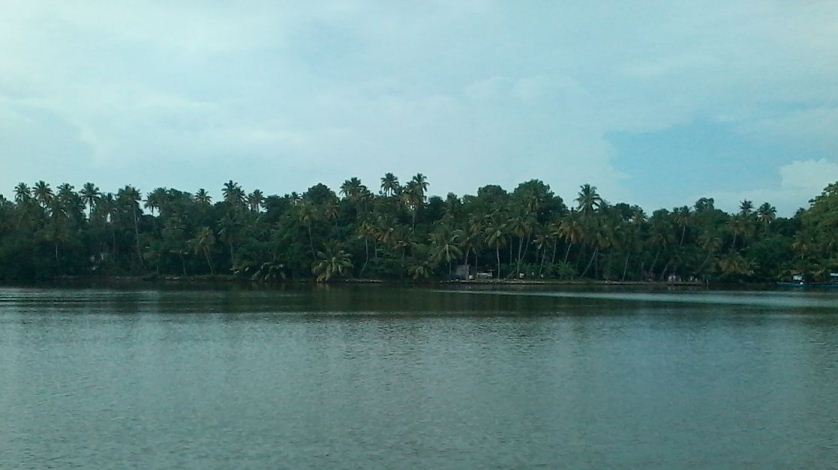
Munroe Island – A view from Ashtamudi Lake
But later in 1795 when British dominance was observed in south India, princely state of Travancore came under their governance. Thus a Resident (Divan) was appointed by British to take power as administrative state of Travancore. Colonel John Munro was the second Resident of Travancore who was known for his good administrative measures. It was under the special interest of Rani Gauri Lakshmi Bhai, John Munro was appointed as administrator. Munro took many good measures for the island and later the island came to be known as Munroe Island or Munroe Thuruth.
Munroe Thuruth – The major administrative measures taken by Munroe
When Munroe took over the powers of an administrator, Munroe Thuruth was only an isolated island and people had to fully depend on boats for local transport. But the land was rich in resources and Munroe realized its real potential. During his tenure, Munroe Island was handed over to Malankara Church Mission Society for the purpose of religious classes and to build a seminary for training priests. In recognition to it, the church authorities gave his name to the isolated island. Munroe later moved to his birth place in Scotland and spent his last days in his hometown, Ross Shire till his death in 1858. Munroe is widely regarded as the best administrator of Travancore-Cochin states and his birth place has been converted to a tourist spot.
Kottayam’s famous CMS College was built by Malankara Church Mission Society. There were crops of coconut and paddy apart from fisheries and tax collected from these businesses were used for the construction of CMS College at Kottayam by the Church Mission Society. Later a deal was made by Maharaja of Travancore and Munroe Thuruth was bought back on lease (Kappam). The process was discontinued by A. K. Gopalan during his tenure as Leader of Opposition at Lok Sabha, and it was declared as a Panchayat under the governance of Kollan Taluk.
Days before railway and roadways were introduced to the Thuruth, water was the only form of transport and Kettuvallams were used for this purpose. In those days, this island was also known by the name – Marathaka Dweep.
Now let us see the important tourist destinations of Munroe Islands.
Churches and other remnants left by Munroe
Panchayat office is one of the crowded places of this village, and a picture of Munroe hung on the wall gives a feeling that Munroe’s soul still wanders there. There are two churches there, believed to be built by Munroe, and a traveller can also find the remains of the bungalow where he lived. Till now annual celebrations are conducted at these two churches, and whole natives of the island celebrate the event.
Mulachanthara Durga-Bhadra temple – An abode of two deities
Perumthuruth Sree Bhadra Devi temple stands on one of the banks of Kallada River. Aana Ezhunnallath (temple procession using decorated elephants) formed a tradition of annual festival celebrations long before Idachal Bridge was opened. In those glorious days carrying Devi’s thidamb (idol) elephants used to cross the river by swimming through water. Though a bridge has been constructed now, the tradition of elephant procession carrying idol and swimming through water is still followed. It’s spectacular to watch decorated elephants walking through rivers carrying idol and colourful umbrella. Usually 20+ elephants participate in the event, and carry alavattom and venchamaram too.
Mulachanthara Devi temple too has a few peculiarities. Durga and Bhadra are the main presiding deities and devotees need to treat them both equally to avoid displeasure of both goddesses. Two flag posts (Kodimaram) are present in the temple, apart from two coin boxes and other pooja ingredients. Same pooja is done for both presiding deities and ‘Edupp Kuthira’ (horse models used for temple festivals) are also same for both.
Deities should offer same amount of rupees, coins or other pooja ingredients to both temples. Otherwise it may result in the anger of the goddess who has been offered less – believes the devotees. Yet devotees are happy with the fact that they have two goddesses to protect them from evils and all sorts of troubles.
Jalolsavam during Onam season
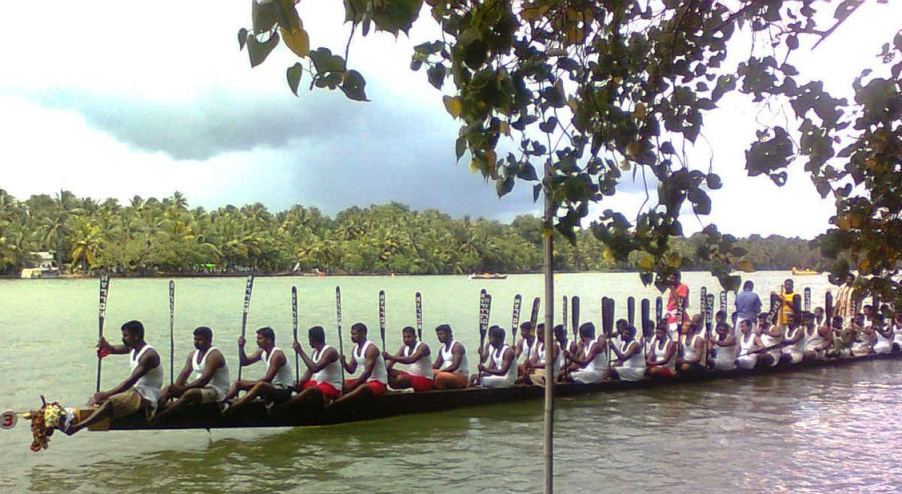
Kallada Boat Race usually conducted in the month of September
For the tourists and people belonging to other parts of the state, locals supply lake resources and a few of their special items. Mala Meen is the highlight served during the water festival season.
Mala – A type of fish found only in the water bodies of Munroe Island
There are certain types of flora and fauna fully restricted to certain areas, a fish with the name Mala (Mala Meen in local terms) is the king among the fresh water fishes found here in Munroe backwaters. It is also described as the tastiest fish of the world and expensive too. One kg of Mala fish may cost 1000 Indian rupees. Its scarcity in availability and excellent taste are the reasons for its high demand.
Mala fish is an invisible fish to fishing nets and it lives in the deep mysterious locations not easy to find. A fresh water fish, it’s pure vegetarian and hides inside the pits of immersed rocks. It lives on grass, water weeds and mosses. When its body becomes fat it moves out of pits and then only visible outside. They jump high on the surface of water giving signals to fishermen and as the Malayalam saying goes, very soon they will be caught and made to curries. That’s the fate of poor Mala fish.
Kettuvallam is the best option to see the Thuruth near
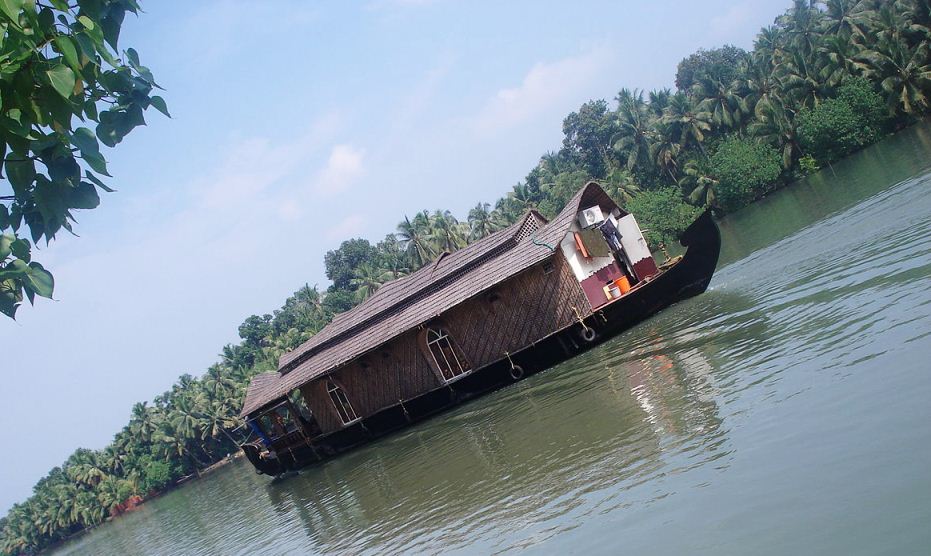
Kettu Vallam commonly known as House Boat is quite popular among tourists
Different types of boats are available here. Yet the centre of attraction is Kettuvallam. Read more about boats and boat races of Kerala here.
To travel through each and every vein and corner of Munroe Thuruth and watch nature’s delight at its best, Kettuvallam is best though expensive. Spectators can watch many migratory birds from various countries around the world, apart from local birds like kingfishers and woodpeckers which reside in mangroves.
Living style of common man
Many inhabitants here do Jaiva farming without the use of pesticides and chemical fertilizers. A few are interested in fishing and also cultivate paddy, banana, coconut etc. Boat building and sand mining are other major activities. It’s also common here to grow prawns and fish in the water bodies, paddy fields etc. Duck poultry farm and prawn breeding are quite common in all houses. Most of the families own a boat here, and many of the activities described above are just routine traditional engagements, carried over from one generation to the next.
Remains of those glorious yesterdays
Coconut coir manufacturing used to be the prime livelihood of inhabitants of the islands years ago. Villagers used to wake and sleep on the rhythms of rope making machines (Raatt in local term)! Coir and coir products had great demand and used to be exported to foreign countries then. Many co-operative societies existed which promoted coir industry. But now, most of them have been closed in fight with failures to meet with daily expenses. A few of those machines have been retained solely for the purpose of promoting tourism, and to show to foreigners while the rest have been converted to cattle sheds. Many of them got destroyed due to neglectance. So sad, but true!
It was a time when coconut oil production was a big business here. Almost every home used to dry coconut pieces (kopra) and grind oil from Koprakalangal – the places where ‘Chakku’ is used to grind coconut oil from dried kopra. Coconut made using Chakku is tasty and huge in demand. For the same reason coconut oil from Munroe Islands costs high during those heydays. But following Tsunami, salt entered many fields of Munroe Islands changing the features and characters of the land. Yet people still follow the procedure to dry coconut in most of the homes of Munroe, though not commercially but for personal purposes.
Now a bridge has been constructed in Idayakadavu. During those old days, people solely depended on boats for transport, and a few small hotels are present where people used to drink tea regularly before crossing the backwaters. There is one small tea shop near the bridge with a history of more than 30 glorious years. Near Idachal bridge there is one 70-year old tea shop though new generation may not be interested to carry forward the tradition to sell tea and snacks.
During those glorious years, more than a 1000 small streams were found in the island groups. However as time passed by many of them have been closed. Yet remains of small streams are visible like veins of a hand. The visuals of green coconut trees and pearl fish (karimeen) and prawns swimming in small streams are still seen, thus leaving behind a few rural sights. Small fishing boats with fishes, water crows and rare birds are a few more sights which attract tourists now.
Before Thenmala dam was built, Munroe Island used to be the delta of Kallada River. River used to carry mineral rich ore and soil from deep forests which used to get deposited on the banks, and people used to earth this delta using Mammoty’s blade and other tools and used for their crops. It gave good results in paddy and banana cultivation in those heydays. Now it’s only a memory of old inhabitants here.
Vettiverippan Paddy fields and Chaappanan coconut trees filled the old glorious decades of Munroe Island. Availability of aquatic resources such as fishes and prawns has also gone down. Availability of prawn types such as Kara konj and Puli Konj were went down drastically. There existed an era when Monroe islands cultivated cloves in abundance and in terms of supply, it was no: 1 village of Kerala. Now even clove trees are not visible anywhere!
There existed an era when only boat services existed and almost every home carried one boat each. Now boat destinations such as Palliyathuruth, Kuthira Munamp,Padappakara, Pattamthurath, Villimangalam, Neettumthurath, Perinalam etc remains only a beautiful and nostalgic dream to many who have reached age 70 or 80+. People used to reach here solely to eat Kanjirakkodu Karimeen (pearl fish) and palm wine (kallu) at noon decades ago!
Common problems of inhabitants
Though Monroe islands form a good tourist destination to visit once in a while, locals have a lot of problems. Though the region is known for spectacular land scenery free of pollution and abundance of aquatic resources, road transport to connect with Highway remains one of the big problems here. To reach the highway just 8 kms away, people need to travel 50 kms. Things go miserable to take serious patients to hospitals which are far away. So there is a high demand of a bridge connecting Peruman and Kannangattu for the past 5 decades or so. Now state government has considered this demand, and the dream is to become true very soon. It should not be forgotten that there was an era when the island was fully isolated from other parts of Kollam with no road transport or bridge available.
Since Tsunami swept the place a decade ago, Monroe Island has witnessed many changes. Occasionally the place is invaded by salt water, which has badly affected people life and cultivation too. Some of low coast areas submerge in water very often bringing panic to people. Unexpectedly water may enter homes at midnights.
How to reach Munroe Islands?
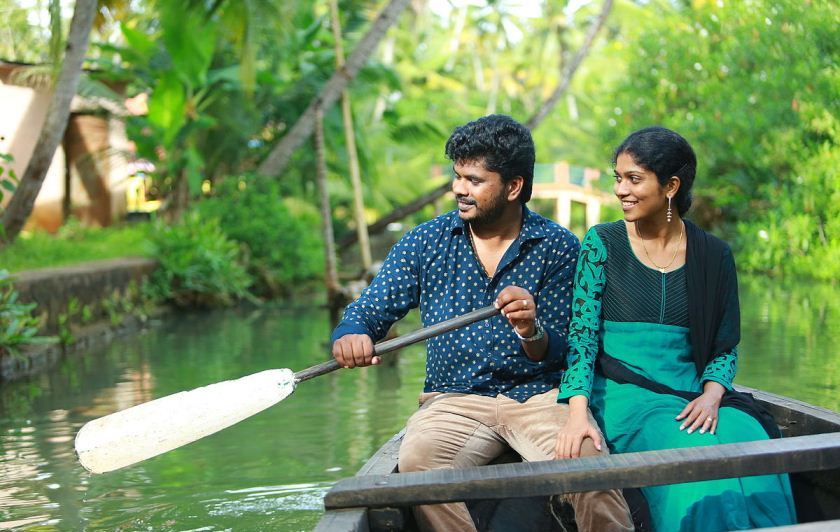
Young couple enjoying the backwaters
This eco tourist village is located in Kollam district of Kerala state. Now tourism is also promoted here by Grama Panchayat Office in the name of Community tourism. As a part of district tourism promotion, boat service is arranged from Kollam to Monroe Islands on daily basis, and two boat services are available – one at morning and second one in the afternoon.
Thiruvananthapuram International is the nearest Airport, and Kollam railway station is the central station. But passenger trains via Kayamkulam have stops at Monroe Islands. From Perumthuruth Devi Temple, Jhangar service (water transport for vehicles) is available till 8.30 pm. You need to reach there before 8.30 pm. Next service will be available on next day early morning only. If you miss the Jhangar service, you need to take a road path through Kundara, and need to travel 50 Kms. Jhangar is the shorted way to travel from Kollam to Islands.
Now Monroe Islands have find a place in the tourist map of the world, and foreign travellers include Germans, British, Americans, Italians etc. To promote tourism, house boats and hotels are also available.
Image source: Wikipedia
You can read a few more articles on some of the major tourist spots of Kerala here. Here is the page link. Click on the images in the gallery to read





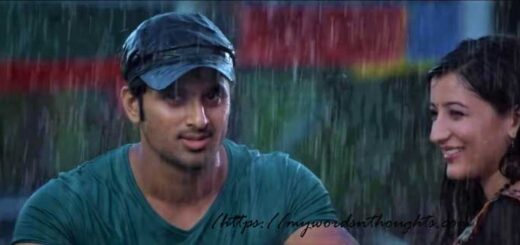
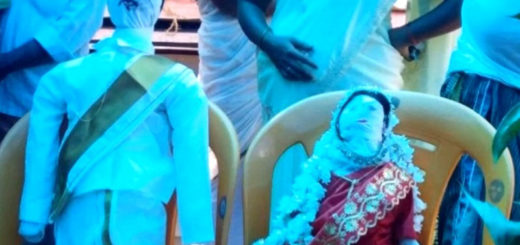
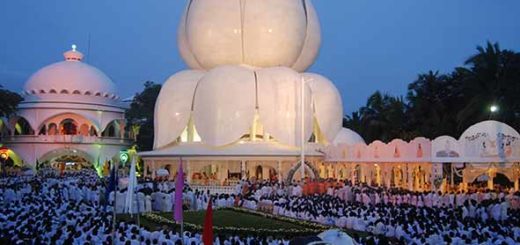
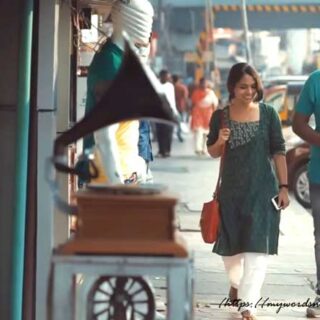







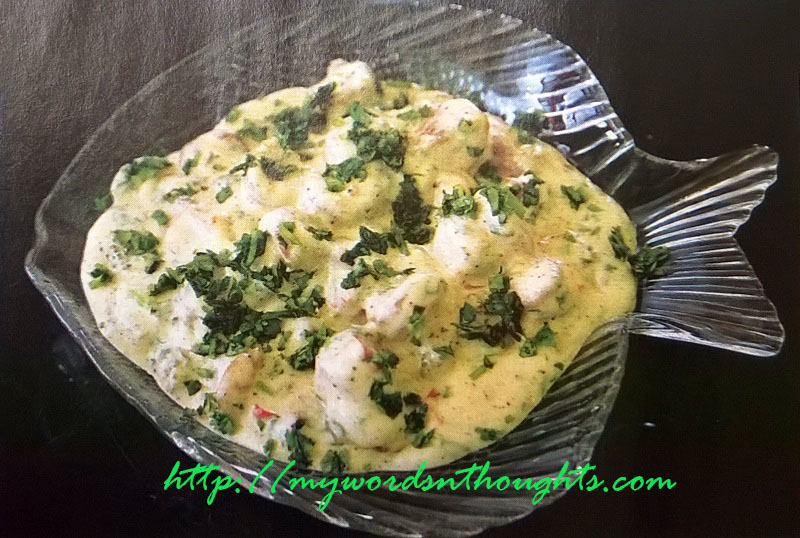
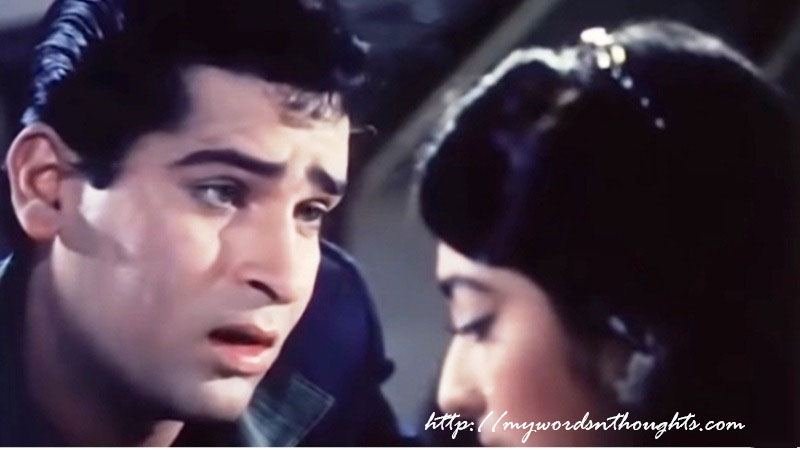
I visited the Munroe Island during the onam season , we had an amazing oppurtunity to watch the boat race in ashtamudi. Thanks to all the teams who bought us entertainment. We stayed at the Raviz hotel (http://theraviz.com/) and the hotel delighted every one of us with luxury and elegance. We hopes to repeat our wonderful trip to this place in the near future.
Thank you for your detailed review about the wonderful trip to God's own country 🙂